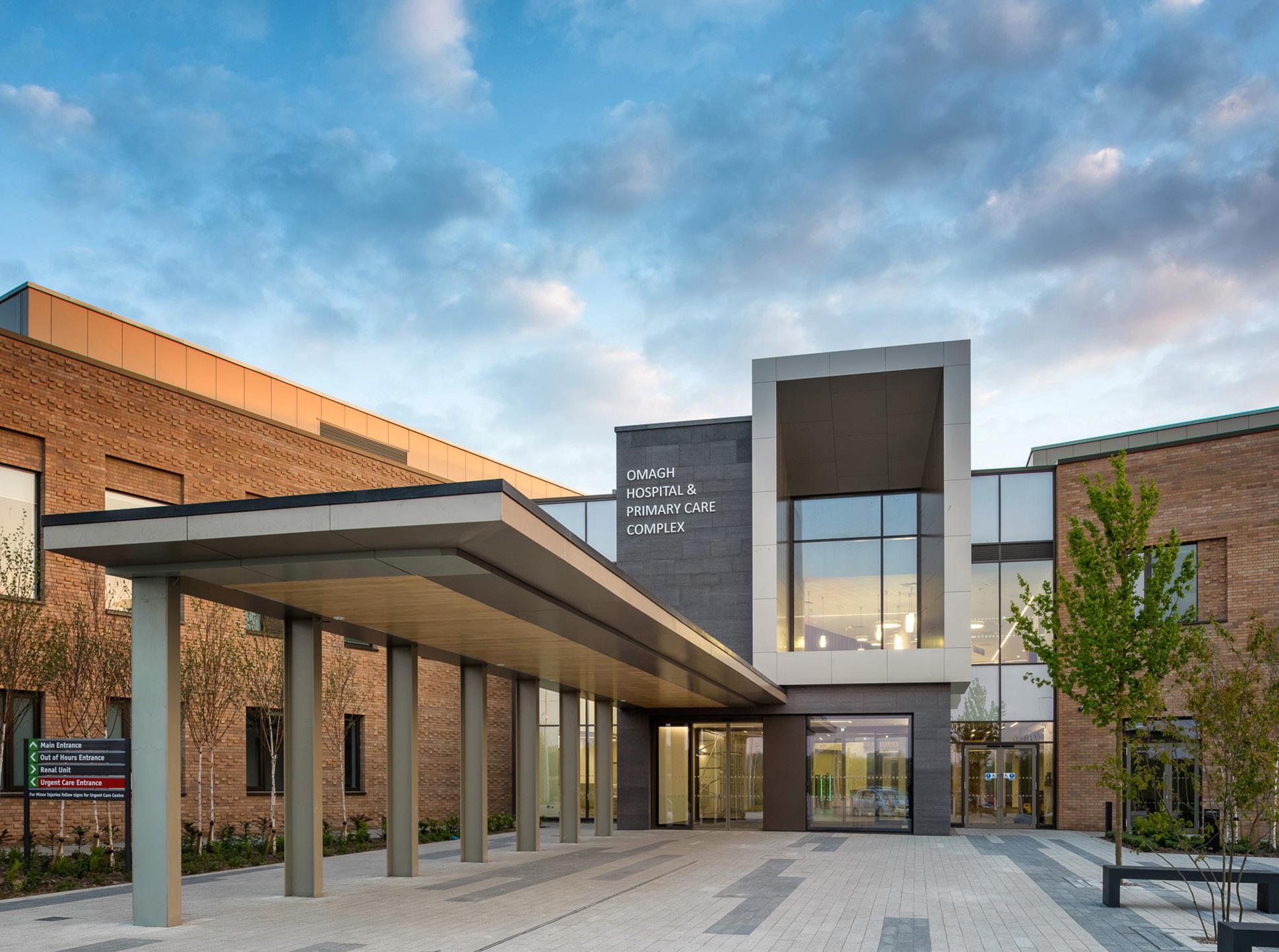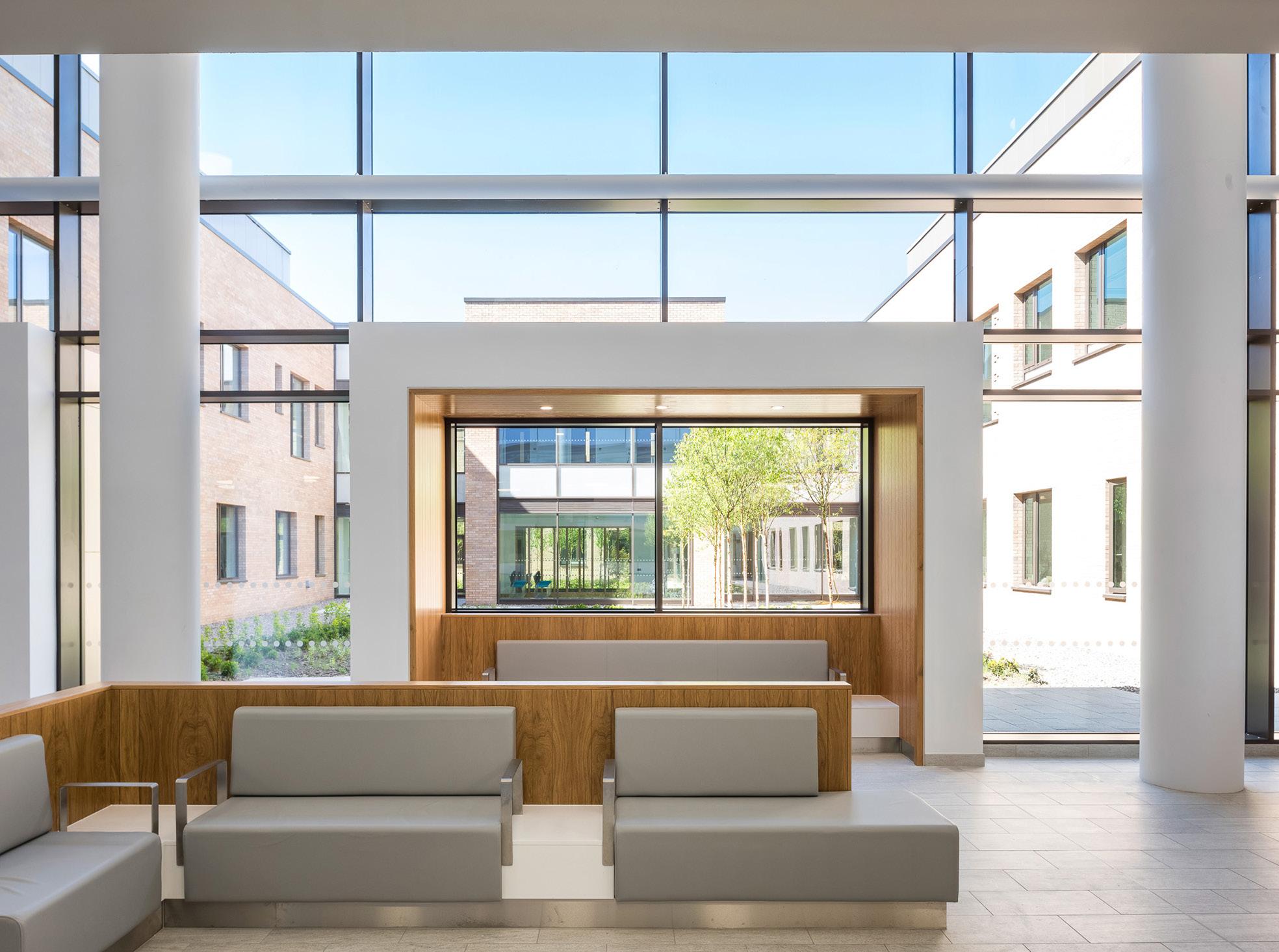
7 minute read
Rehabilitation Service Design
from Health Business 22.5
by PSI Media
A co-ordinated approach to rehabilitation
Gonzalo Vargas del Carpio, Head of Healthcare at TODD Architects looks at rehabilitation service design
Whilst a fundamental element of the acute care pathway, rehabilitation has found itself undeservedly neglected as part of the healthcare system, often undervalued and living in the shadow of other higher profile and immediate life-saving treatments. However, addressing unmet rehabilitation needs is fast becoming a recognised global priority. According to a 2017 research paper on the Global Need for Physical Rehabilitation, aging populations and the high survival rate of people with severe health conditions has seen the physical rehabilitation needs of the global population increasing exponentially since the 1990s, even in high-level income countries.
Covid
The Covid-19 pandemic has undoubtedly added further to that demand. Whilst we await further quantifiable data on the pandemic’s impact on physical rehabilitation need, initial studies give some indication and professionals on the importance of rehabilitation has seen some progress made in recent years, particularly following the World Health Organizations’ Rehabilitation 2030 call for action. We have also seen Governments commit to a number of highprofile, landmark developments such as the National Rehabilitation Hospital (NRH) in Dublin and the recently green-lit National Rehabilitation Centre at Stanford Hall in Nottinghamshire which will combine clinical rehabilitation, R&D, training and education under one roof. However, a more coordinated approach for the rehabilitation of people with long-term conditions is required, particularly at a local level.
Further research on the impact of Covid-19 on diverse rehabilitation programs is required for the appropriate planning of resources, services and facilities for rehabilitation. This is especially important now, post pandemic, before planning decisions around health service recovery and resilience get locked in and opportunities to optimise the delivery of rehabilitation are lost.
Backlogs
Throughout Europe, many governments are planning to address the backlogs built up during the pandemic and tackle long waits for care by building dozens more community diagnostic centres to expand capacity for checks, scans and treatments. However, there is not much discussion on rehabilitation, or mental health provision for that matter.
The latter is important because physical rehabilitation is often accompanied by mental health issues. Yet towards the end of last year, NHS England estimated that a staggering 1.6 million people were waiting for treatment from mental health services, with the Royal College of Psychiatrists warning that the unprecedented impact of the pandemic will wipe out years of hard-won progress in mental health unless there is sustained investment. E
of possible ramifications. Researchers at the University of Michigan, for instance, found the global prevalence of Long Covid in those diagnosed with the virus to be around 43 per cent and, whilst most Long Covid symptoms are treatable and selfmanaged at home, it is clear that many more patients may require rehabilitation for ongoing physical, psychological, and cognitive difficulties following infection. It’s not only the increased numbers of patients requiring treatment, but also the disruption to existing rehabilitation services and the impact it may have on frontline healthcare systems further down the line. A study published in early 2021 on cardiac rehabilitation during the COVID19 pandemic, for instance, concluded that programme suspensions and access for high-risk patients to these services might have an impact on longterm hospital admissions. However, addressing unmet rehabilitation needs is fast becoming a recognised global priority It’s true that continuing pressure from rehabilitation charities
Striking a healthy balance

How can private healthcare businesses navigate economic turbulence? Sandy Boxall investigates
I just used my phone to order up a repeat prescription. It’s the sort of action that was unthinkable even a decade ago but is now so commonplace it barely merits mentioning.
Thanks to the relentless tide of digital advances, patients no longer have to rely on traditional routes to healthcare – thank goodness. Can you imagine what the pandemic would have been like without technology to underpin the vaccines?
Today, though, we’re facing up to a different kind of storm. Much like Covid, no one is totally immune to cost of living increases and a looming recession. And of course it’s not just individuals and families affected.
Businesses, too – including those in private healthcare – are grappling with increased risk and challenges. With firms and individuals poised to reduce spending, even if your business has a full order book, it is probable that this won’t last. It pays, then, to not only be fully tapped into every digital opportunity but also to have a diversified customer base. And this means targeting public sector tenders.
Next stop: public sector
Although media reports suggest that the chancellor is hunting for spending cuts, the government sector nonetheless enjoys some big advantages.
For example, its budgets are committed for the future, sometimes for years in advance, and it cannot go bankrupt. Government must also pay on time – with plenty of avenues available to complain if for some reason it doesn’t.
And it’s also important to remember that much government spending is nondiscretionary. It is going to happen – regardless of external pressures – regardless of the political stripe of the incumbent administration.
No silver bullet
That all said, it’s important to remember switching to public sector tenders won’t address every economic challenge in one fell swoop.
Companies need to continue to prioritise digital business while understanding that public sector work doesn’t happen overnight. Suppliers need to invest in the market, build relationships, and bid for the right tender and win it. First time entrants should look to make a minimum three to six month commitment.
This means that now is the time to begin pivoting your business – there’s no time to waste. If you need any advice, Contract Finder Pro is here to help. Don’t hesitate to get in touch. L
About the author
Sandy Boxall is director of Contract Finder Pro.
FURTHER INFORMATION
sandy.boxall@contractfinderpro.com www.contractfinderpro.com
Flip, swing or multi-compartment recycling bins, innovative all-plastic sack holders, ultra durable sustainable hardwood street bins, high tech kitchen wonders all the way up to 1100lt flat top wheelies.
If you need a bin, we’ve just the thing!

Call: 01684 295782 www.trojanbins.com sales@trojanbins.comCall: 01684 295782 www.trojanbins.com sales@trojanbins.com
Remote technology Of course, remote technology will have a role to play in the future of rehabilitation programme provision and, as the authors of the above report on cardiac rehabilitation found, the rapid adoption of technology into standard practice has improved services provision and patient access. However, the research also highlights issues regarding limited uptake of technology by patients over 65, safety concerns and reduced patient experience due to lack of social interaction. It is clear, therefore, that whilst technology can assist, it is not a solution in its own right.
It is well understood that rehabilitation should commence as soon as possible, requiring access to services in a timely manner to provide early intervention. Given that physical rehabilitation should also be accompanied by counselling, an integrated care system needs to be promoted where co-location of services closer to the community can speed up the journey through diagnosis, physical and mental treatment and rehabilitation. Co-location of services can also allow critical care, acute medical and specialist rehabilitation teams to work closely together to develop better rehabilitation pathways for patients.
This is particualry important in rural or semi-remote urban locations, where the colocation of healthcare services can maximise resources, improve the patient pathway and address health inequalities. Commonly referred to as Health and Well Being Centres or Community Treatment and Care Centres, these ‘one-stop shop’ facilities typically include GPs, consulting and treatment suites, physiotherapy, paediatrics, dentistry, occupational and speech therapy together with social services such as homecare, primary mental health teams and outsourcing centres. The design of these environments has, at its core, ‘simple-to-access’ healthcare making it easier for patients to get tests closer to home and reducing the number of visits by delivering multiple tests and consultations in a single appointment and location.
Examples
TODD Architects has been widely involved in this model of care in Northern Ireland, including the award-winning Omagh Hospital & Primary Care Complex, which includes a range of hospital and community healthcare services together in one place and was heralded as a unique and new ‘model of care’ and ‘environment for healing’. In Dublin, too, the Finglas Primary Care Centre will also co-locate physio and occupational therapy spaces with mental health services, alongside General Practitioners services.
Rehabilitation is an important part of the treatment process, reintegrating patients back to their normal lives and improving their quality of living, whilst also relieving pressure on other areas of health service provision. To deliver effective rehabilitation to the people who need it, evidence-based planning is required and co-location of services in accessible, welcoming and flexible facilities is a sensible proposition to meet the rising demand. L Gonzalo Vargas del Carpio was the clinical design lead for the Defence and National Rehabilitation Centre (DNRC) in Loughborough.
FURTHER INFORMATION
Further information is available here.










